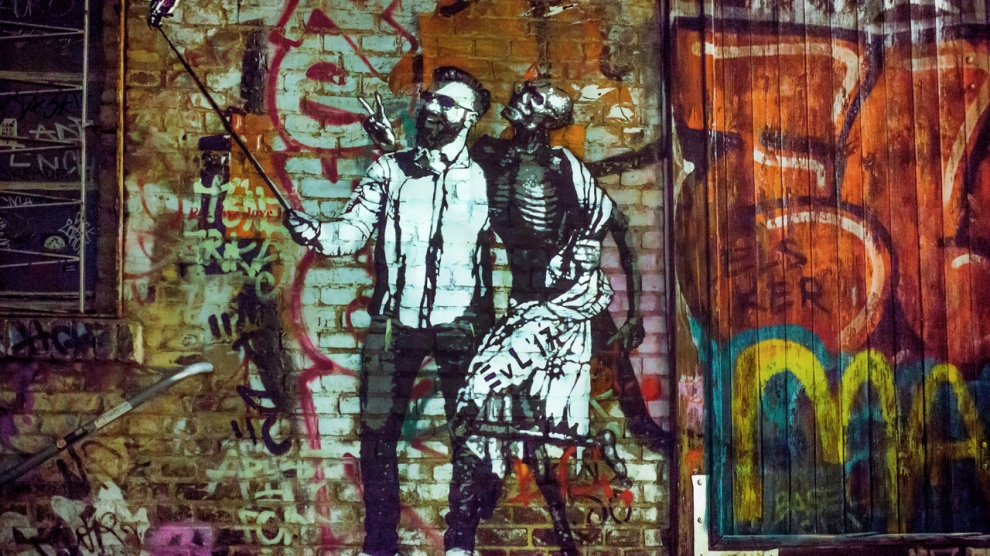Estonia is open for business and ready to welcome visitors, and the Tallinn Bienniale, which kicks off on July 2, looks set to provide art lovers plenty of food for thought.
One of the first major events to take place anywhere in Europe since Covid-19 lockdown restrictions began to be relaxed, the Tallinn Bienniale is hoping to attract international attention to the local art scene, present the work of artists to a broader public and through a curatorial standpoint will speak of issues relevant for today.
The Tallinn Bienniale has grown out of Tallinn Art Week, which will continue to accompany the bienniale by taking place outside the Estonian capital in alternate years.
Andra Orn, the head organiser of the biennial, says that unlike the festival style art week format, the bienniale has a more in-depth approach and will be more comprehensive.
“The bienniale will offer locals, and hopefully in the future an international audience, the opportunity to see and experience the latest in Nordic and Baltic contemporary art, and over a longer period of time,” she says. “This international bienniale will put Tallinn on the map for art professionals and the public, and will help find new opportunities for Estonian artists and new collaborative projects for local creative institutions.”
Within the framework of this year’s theme – Global Language – a universal system of communication is sought, through which we could freely communicate regardless of gender, race, background, education and religion, within the paradoxical situation where we are increasingly closer to one another, yet moving further apart. A global language could create a platform for understanding and offer solutions to common global challenges that are more acute than ever before. The bienniale proposes that this language could be art and culture, and asks what we are likely to gain or lose if it were applied.
“Language and cultural identity are the threads that hold humanity together,” adds Orn. “Many of these have become stretched, torn apart, woven together or have completely disappeared. How can we find a common understanding that reflects reality today and helps us adjust to the rapid changes? Is there a universal language that would help us understand the different notions and support one another? Can we face global challenges without a common language?”.

The Tallinn Bienniale will take place this year from July 2-30, and will begin with a major exhibition by street artist Edward von Lõngus titled Doomsday Cathedral.
Audiences abroad experienced the work of von Lõngus, a key figure in local street art, three years ago when Estonia held the EU presidency and his graffiti series, inspired by Danse Macabre – a painting in the church of St Nicholas in Tallinn by the late medieval German master Bernt Notke – was presented in various cities across Europe.
The same motif is being developed this time for the Doomsday Cathedral, where the work will take on formidable dimensions extending to 25 square metres on steel plates weighing more than half a ton and hanging only on metal wires from the ceiling. The new work in the exhibition is Lõngus’s remix of the frescoes of Michelangelo’s Sistine Chapel depicting the Last Judgment. The effect is both spectacular and sacral, and instead of displaying the saints entering heaven, it is more reminiscent of the work Hell by the legendary Estonian graphic artist Eduard Wiiralt.
“It’s easy to relate to Lõngus’s work – his stencilled street art has the same effect as the memes of the virtual world we are so familiar with,” says Orn. “Lõngus is known for his playfulness, although over the years he has become increasingly serious and critical of society.”
The exhibition will take place in Ülemiste City, a technology hub built on the edge of a Soviet-era industrial district, which is a sight well worth visiting in itself. Unlike many major events cancelled this summer, the Biennale’s main exhibition and numerous other events will be physically open to visitors, as it is now possible to travel to Estonia from many countries without having to go into quarantine.
“Doomsday Cathedral is certainly no ordinary exhibition, but a unique experience – on entering the space, guests will be confronted by a capital-centric world, where death and destruction are seen as entertainment,” adds Orn. “The environment of the exhibition is also worth highlighting. The main exhibition takes place in a factory built in 1899, which once produced equipment for nuclear power plants, scaling the growing need for energy and consumption on the one hand, and life and safety on the other. The timing is also relevant – the world has been through a lot this spring, and Lõngus’s end of the world images have arrived in a new and painful situation in every sense.”
The full Tallinn Biennale programme can be viewed at the event’s website, tallinnbiennial.com.
—
Photos: Tallinn Biennale
—
Unlike many news and information platforms, Emerging Europe is free to read, and always will be. There is no paywall here. We are independent, not affiliated with nor representing any political party or business organisation. We want the very best for emerging Europe, nothing more, nothing less. Your support will help us continue to spread the word about this amazing region.
You can contribute here. Thank you.







Add Comment